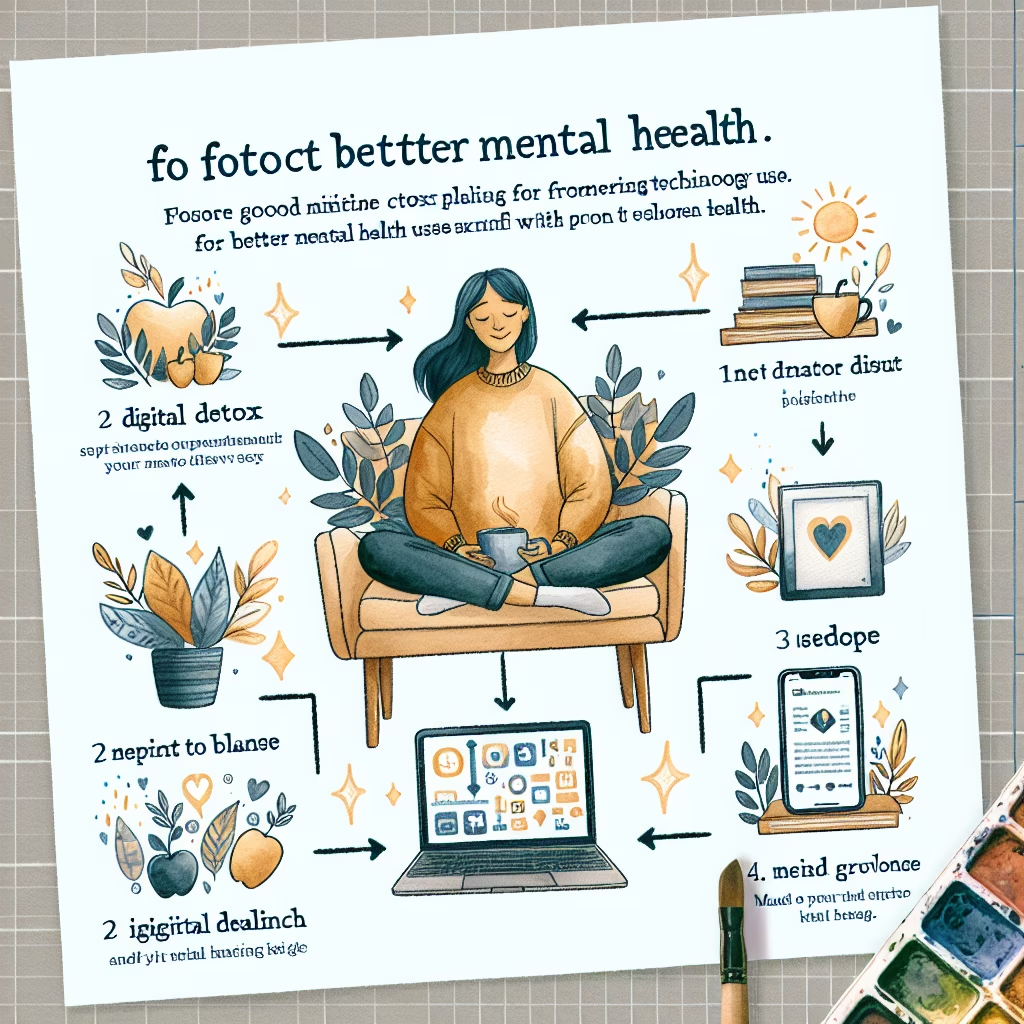In today’s hyper-connected world, it’s easy to find ourselves overwhelmed by the constant barrage of notifications, emails, and social media updates. A digital detox can help restore balance, improve mental health, and enhance overall productivity. This document will guide you through the process of creating a personalized digital detox plan, offering actionable steps, insights, and tips to ensure you get the most out of your detox experience.

Digital detoxing involves taking a break from digital devices to improve mental well-being and productivity. This guide provides a structured plan to help individuals disconnect from technology, regain control over their digital habits, and foster healthier relationships with their devices. By implementing a digital detox plan, you can reduce stress, enhance focus, and improve your overall quality of life.
Before diving into your digital detox, take a moment to reflect on your current tech usage. Ask yourself:
Things to Note: Keeping a journal for a week can help you track your usage patterns and identify what triggers the urge to check your phone or computer.
Establish what you hope to achieve through your digital detox. Your goals can be:
Author's Personal Thoughts: Setting realistic and measurable goals is essential. Instead of aiming for an extreme reduction in usage, start with small, achievable targets that gradually lead to more significant changes.
Creating a structured plan can help you stay committed to your detox. Here’s an example of a weekly digital detox diet plan:
Good Practices: Consider adding short periods of meditation and mindfulness into your digital diet. This can enhance the detox experience and help reduce stress levels at work.
Create specific areas in your home where devices are not allowed. For instance:
Tips: Communicate these zones with family members to ensure everyone is on board with the plan. This communal effort can make it easier to stick to the detox.
Push notifications can be a constant distraction, pulling you back into your devices. Start your detox by turning off notifications for non-essential apps. Keep alerts only for important communications, like work emails or messages from close family and friends.
If you work on a computer, it’s essential to schedule regular breaks. Here are some suggestions:
Things to Be Mindful Of: Leaving your phone behind during these breaks can help reinforce the habit of disconnecting.
Having a partner to share your digital detox journey can be incredibly motivating. Find a friend, colleague, or family member who also wants to reduce their screen time. You can support each other, share progress, and even engage in activities together that don’t involve technology.
Author's Insight: A detox buddy can transform the experience from a solitary challenge into a fun and engaging activity.
At the end of each week, take time to reflect on your digital detox experience. Ask yourself:
Good Practices: Adjust your plan based on your reflections. If certain strategies didn’t work, don’t hesitate to modify them for better results.
Instead of mindlessly scrolling through social media or browsing the internet, try to approach your screen time with intention. Ask yourself:
Tips: Make a list of productive activities you can do on your devices, like learning a new skill or catching up on educational podcasts, to replace unproductive habits.
Finally, don’t forget to celebrate your progress! Whether it’s a week of successful detoxing or a specific goal you’ve achieved, take a moment to reward yourself. This could be as simple as treating yourself to a nice meal, enjoying a day out, or indulging in a favorite hobby.
Creating a digital detox plan is a powerful way to reclaim control over your technology use and improve your mental health. By following the steps outlined in this guide, you can develop healthier habits, reduce stress, and enhance your overall well-being. Remember, the goal isn’t to eliminate technology entirely but to cultivate a more balanced and intentional relationship with it.
You can also watch this video tutorial for a visual guide:
This comprehensive guide provides essential steps and tips for starting a successful remote graphic design ...
A comprehensive guide for beginners on how to start investing in the stock market. Learn ...
This document provides a comprehensive guide to mastering data visualization techniques using Python in 2024, ...
A comprehensive guide on how to train for a marathon in six months, covering goal ...
Learn how to start a remote customer support business in 2024 with this comprehensive guide. ...
A comprehensive guide on how to improve home energy efficiency for lower bills, covering heating ...